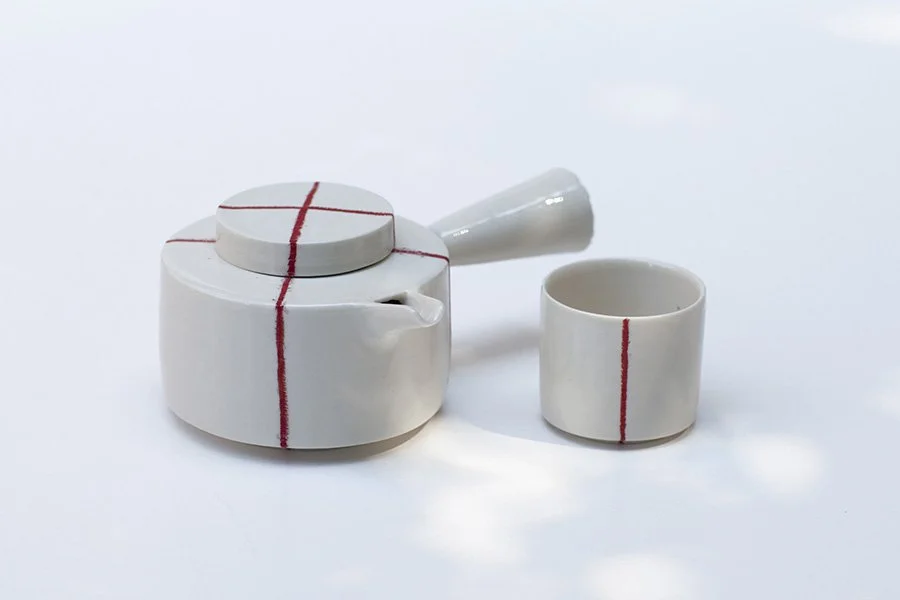tea bowls with Ichimatsu pattern (chequer pattern) and koushimado (wooden lattice)
New pieces new pattern and new red lines are what you will see at my upcoming exhibition in London Contemporary ceramic centre. I am looking forward to share the progress I have made since receiving Arts Council funding in 2021. I travel through Japan and met up with crafts masters that work with clay but also with makers of candles and wax.
I developed the Toko vase - taking inspiration from a domestic space in the traditional Japanese home. A tokonoma (床の間), or simply toko (床), is a recessed space in a Japanese-style reception room, in which items for artistic appreciation are displayed. I find it fascinating that even in this space-constricted society one makes space for contemplation and beauty. One would place a scroll and an ikebana arrangement in this recess of a tatami room. My Toko vase responds to the structural shapes of ikebana and the restrained aesthetic of such a space.
Gourd vessels/ Hisago
The vase has a form of gourd that is called hyotan.
Overall, the hyotan gourd carries deep cultural significance in Japan, representing aspects of life, luck, protection, and artistic expression. Its unique form and association with various traditions make it a notable symbol in Japanese society. In Japanese culture, the gourd has a long-standing association with life, good fortune, and protection from evil spirits. It has been used for various purposes throughout history, including as a container for storing water, sake (Japanese rice wine), and medicine. The gourd is also believed to have mystical and healing properties, and it is sometimes used as a talisman or amulet to ward off evil and bring luck.
Sake ewer and cup
This could be mistaken for a teacup and tea bowls. But on my travels through Arita, I visited several collections of porcelain by which I learned that sake could be poured out of these “ewers”. You can drink cold or warm sake from it and it holds the temperature better than glass or other materials. I had a small glimpse of the sake culture that is still well alive in Japan. It’s more varied and has more aspects to it than I anticipated. Ideally, you get local fresh sake - but a newsagent or supermarket would also sell it in a can or card box. It can be bubbly or flat, sweet or dry, mild or strong, cloudy or clear. The variety is great and you can buy massive bottles and tubs wrapped in straw. And most delicious with most meals.









